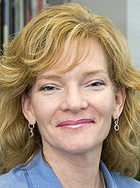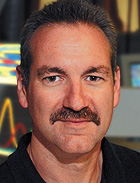The School of Medicine will play a leading role in an international collaboration to sequence the genomes of 1,000 individuals by participating in the ambitious 1,000 Genomes Project, designed to create the most detailed picture to date of human genetic variation and assist in the identification of many genetic factors underlying common diseases.
Drawing on the expertise of research teams in the United States, China and England, the project will develop a new map of the human genome that will provide a close-up view of medically relevant DNA variations at a resolution unmatched by current technology. As with other major human genome reference projects, data from the 1,000 Genomes Project will be made swiftly available to the worldwide scientific community through free public databases.

“A project like this would have been unimaginable only a few years ago,” said Elaine Mardis, Ph.D., co-director of the University’s Genome Sequencing Center and one of the project’s lead investigators. “We now have the ability to examine in intimate detail variations in the genetic code that differ from person to person.”
At the genetic level, any two humans are more than 99 percent alike. However, it is important to understand the small fraction of genetic material that varies among people because it can help explain differences in individuals’ risk of disease, response to drugs or reaction to environmental factors.
Common variation in the human genome is organized into local neighborhoods called haplotypes, which usually are inherited as intact blocks of information.
Recently developed catalogs of human genetic variation, such as the HapMap, have proven valuable in human genetic research. Using the HapMap and related resources, researchers already have discovered more than 100 regions of the genome containing genetic variations that contribute to common diseases such as diabetes, coronary artery disease, prostate and breast cancer, rheumatoid arthritis, inflammatory bowel disease and age-related macular degeneration.
However, because existing maps are not extremely detailed, researchers often must follow those studies with costly and time-consuming DNA sequencing to help pinpoint the precise variations. The new map would enable researchers to more quickly zero in on disease-related genetic alterations, speeding efforts to use genetic information to develop new strategies for diagnosing, treating and preventing common diseases.

“Our best chance of knowing why some people remain healthy well into their 90s and others develop illnesses at an early age is to understand the numerous genetic variations that exist within humans,” said Richard K. Wilson, Ph.D., director of the University’s Genome Sequencing Center and professor of genetics and of microbiology in the School of Medicine. “This project will accelerate efforts to pinpoint the many genetic factors that underlie human health and disease.”
The scientific goals of the 1,000 Genomes Project are to obtain a catalog of variations that occur at a frequency of 1 percent or greater in the human population across most of the genome, and down to 0.5 percent or lower within genes. This likely will entail sequencing the genomes of at least 1,000 people.
The project will receive major funding from the Wellcome Trust Sanger Institute in England, the Beijing Genomics Institute in China and the National Human Genome Research Institute, part of the National Institutes of Health.
In addition to the University, both the Sanger Institute and the Beijing Genomics Institute will contribute sequencing data, as will the Broad Institute of Massachusetts Institute of Technology and Harvard University and the Human Genome Sequencing Center at the Baylor College of Medicine in Houston. The consortium may add other participants over time.
The project depends on large-scale implementation of several new sequencing platforms. Using standard DNA sequencing technologies, the effort likely would cost more than $500 million.
However, leaders of the 1,000 Genomes Project expect the costs to range from $30 million to $50 million because of the project’s pioneering efforts to use new sequencing technologies in the most efficient and cost-effective manner.
The 1,000 Genomes Project will use samples from volunteer donors who gave informed consent for their DNA to be analyzed and placed in public databases.
Among the populations whose DNA will be sequenced are: Yoruban in Ibadan, Nigeria; Japanese in Tokyo; Han Chinese in Beijing; Utah residents with ancestry from northern and western Europe; Luhya in Webuye, Kenya; Maasai in Kinyawa, Kenya; Toscani in Italy; Gujarati Indians in Houston; Chinese in metropolitan Denver; people of Mexican ancestry in Los Angeles; and people of African ancestry in the southwestern United States.